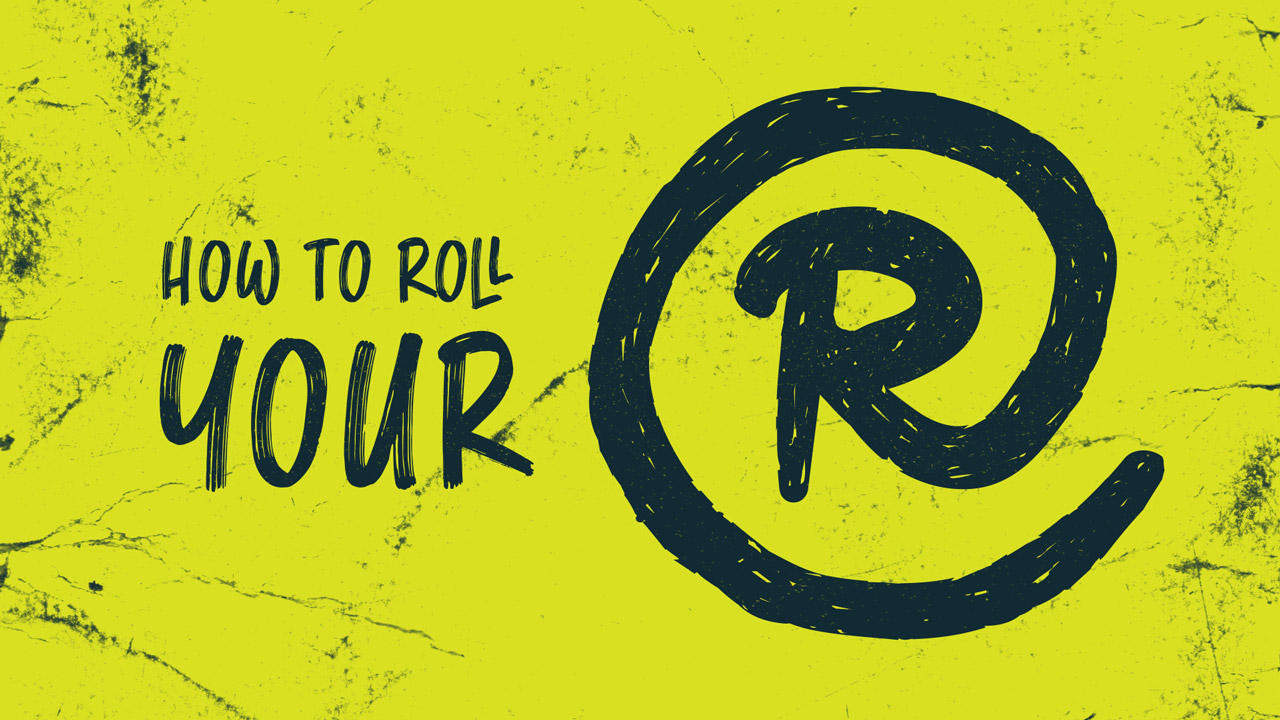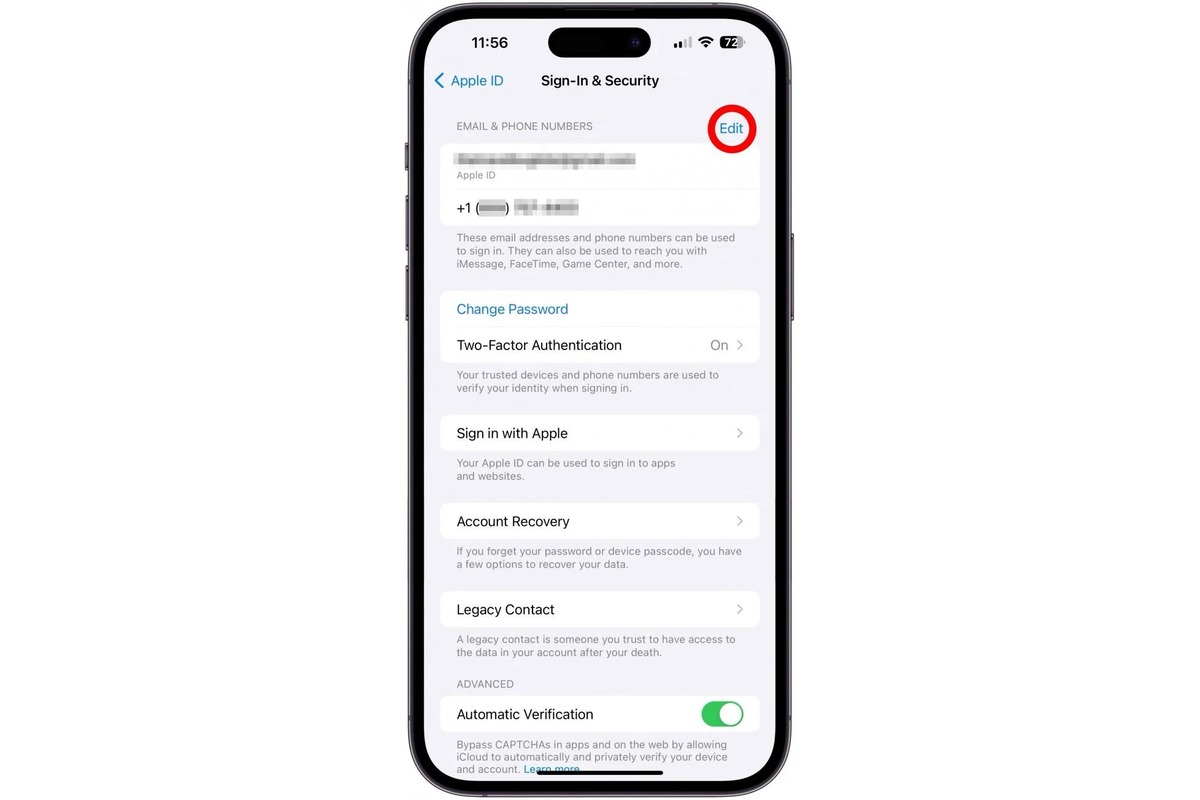Home>Language and Grammar>How To Roll Your R’s


Language and Grammar
How To Roll Your R’s
Published: February 24, 2024
Learn how to roll your R's and improve your language and grammar skills with our step-by-step guide. Master the art of pronunciation and impress others with your linguistic abilities.
(Many of the links in this article redirect to a specific reviewed product. Your purchase of these products through affiliate links helps to generate commission for Noodls.com, at no extra cost. Learn more)
Table of Contents
Introduction
Rolling your R's is a fascinating and often challenging aspect of language pronunciation. Whether you're learning Spanish, Italian, Russian, or any other language that features this distinctive sound, mastering the art of rolling your R's can be a rewarding and enriching experience. The ability to produce a crisp and resonant rolled R can significantly enhance your language skills and help you communicate more effectively with native speakers.
The rolled R sound is characterized by the rapid vibration of the tip of the tongue against the alveolar ridge, the bony ridge located just behind the upper front teeth. This intricate articulation creates a distinctive trill that adds depth and authenticity to your spoken language. While some individuals seem to effortlessly roll their R's, many language learners encounter difficulties in producing this sound.
In this comprehensive guide, we will delve into the mechanics of rolling your R's, explore various techniques to help you master this elusive sound, and provide valuable tips to avoid common pitfalls. By understanding the intricacies of rolling your R's and implementing targeted practice strategies, you can overcome challenges and develop proficiency in producing this iconic phoneme.
Embarking on the journey to master the rolled R sound requires patience, perseverance, and a willingness to embrace the nuances of language articulation. Whether you're a language enthusiast, a student striving for linguistic fluency, or an individual seeking to refine your pronunciation skills, this guide is designed to equip you with the knowledge and techniques necessary to conquer the art of rolling your R's. So, let's embark on this captivating linguistic adventure and unravel the secrets of mastering the elusive rolled R sound.
Read more: How To Roll An Egg Roll
Understanding the Mechanics of Rolling Your R's
To master the art of rolling your R's, it's essential to comprehend the intricate mechanics behind this unique phoneme. The rolled R sound, often symbolized by the letter "r" with a small trill symbol (ɾ) in the International Phonetic Alphabet (IPA), involves the rapid vibration of the tip of the tongue against the alveolar ridge. This specific articulation creates a distinctive trill that is prevalent in numerous languages, including Spanish, Italian, Russian, and Scottish English.
The primary point of contact for producing the rolled R sound is the alveolar ridge, a bony ridge located just behind the upper front teeth. When articulating the rolled R, the tongue makes rapid and controlled movements, creating a fluttering or vibrating effect against the alveolar ridge. This intricate tongue movement is the key to producing the crisp and resonant rolled R sound.
Understanding the precise positioning of the tongue is crucial for mastering the rolled R sound. The tip of the tongue should be in close proximity to the alveolar ridge, allowing for swift and controlled movements. As the airflow passes between the tongue and the alveolar ridge, the rapid vibration of the tongue produces the characteristic trill that defines the rolled R sound.
Furthermore, the airflow plays a pivotal role in shaping the quality of the rolled R sound. The controlled release of air as the tongue vibrates against the alveolar ridge contributes to the clarity and resonance of the rolled R. By regulating the airflow and tongue movements, language learners can refine their pronunciation and achieve a more authentic rendition of the rolled R sound.
In essence, mastering the mechanics of rolling your R's entails a deep understanding of tongue placement, airflow control, and precise articulatory movements. By honing these fundamental aspects of pronunciation, individuals can embark on a transformative journey toward achieving proficiency in producing the elusive and captivating rolled R sound.
Techniques for Rolling Your R's
Mastering the rolled R sound requires patience, dedication, and a repertoire of techniques tailored to refine your pronunciation. Here are several effective techniques to help you conquer the art of rolling your R's:
-
Tongue Placement: Begin by positioning the tip of your tongue against the alveolar ridge, the bony ridge located just behind your upper front teeth. Apply gentle pressure to ensure contact between the tongue and the ridge.
-
Airflow Control: Practice regulating the airflow as you position your tongue. Start by exhaling gently and gradually increasing the airflow. The goal is to achieve a balance where the airflow allows the tongue to vibrate against the alveolar ridge without impeding the sound production.
-
Repeated Articulation: Engage in repetitive articulation exercises to familiarize your tongue with the rapid movements required for rolling your R's. Start with slow, deliberate trills and gradually increase the speed as your tongue acclimates to the sensation.
-
Tongue Fluttering: Experiment with fluttering your tongue against the alveolar ridge to simulate the rapid trill of the rolled R sound. Focus on achieving a consistent and controlled fluttering motion to emulate the desired phonetic effect.
-
Vocalization Practice: Combine the tongue trill with vocalization to integrate the rolled R sound into words and phrases. Begin by vocalizing simple syllables and gradually progress to incorporating the rolled R into longer words and sentences.
-
Mirror Practice: Utilize a mirror to observe your tongue positioning and movements as you practice rolling your R's. Visual feedback can enhance your awareness of proper tongue placement and help refine your articulatory precision.
-
Patience and Persistence: Embrace a patient and persistent mindset as you navigate the process of mastering the rolled R sound. Recognize that consistent practice and gradual improvement are integral to achieving proficiency.
By incorporating these techniques into your practice routine, you can cultivate the skills necessary to produce the rolled R sound with confidence and clarity. Each technique serves as a valuable building block in your journey toward mastering this distinctive phoneme, empowering you to communicate with authenticity and fluency in your target language.
Common Mistakes to Avoid
Mastering the art of rolling your R's involves navigating potential pitfalls and avoiding common mistakes that can hinder your progress. By recognizing and addressing these challenges, language learners can refine their pronunciation skills and achieve greater proficiency in producing the rolled R sound. Here are some prevalent mistakes to avoid when endeavoring to master this elusive phoneme:
Inadequate Tongue Placement
One common mistake is failing to position the tongue correctly against the alveolar ridge. Inadequate tongue placement can impede the ability to produce a clear and resonant rolled R sound. It is essential to ensure that the tip of the tongue makes consistent and firm contact with the alveolar ridge, allowing for precise articulatory movements and facilitating the desired trilling effect.
Read more: How To Roll Sleeves
Excessive Tension
Experiencing excessive tension in the tongue and jaw muscles is another common stumbling block. Tension can hinder the fluidity of tongue movements and impede the production of a smooth and controlled trill. Language learners should strive to maintain a relaxed tongue and jaw posture while practicing the rolled R sound, allowing for effortless articulation and enhanced phonetic clarity.
Overemphasis on Force
Attempting to produce the rolled R sound with excessive force or pressure can lead to strained articulation and an unnatural phonetic output. Instead of relying on forceful tongue movements, focus on achieving a delicate balance of tongue positioning and controlled airflow. Gentle and precise articulatory movements are key to producing an authentic and resonant rolled R sound.
Lack of Patience
Impatience and frustration can hinder progress when learning to roll your R's. It is important to approach the practice process with patience and a positive mindset. Mastery of the rolled R sound requires consistent and dedicated practice, and embracing a patient attitude is crucial for overcoming challenges and refining pronunciation skills.
Inconsistent Airflow Control
Inadequate control of airflow can compromise the clarity and resonance of the rolled R sound. Language learners should practice regulating the airflow to facilitate the smooth vibration of the tongue against the alveolar ridge. Strive to achieve a balanced airflow that complements the articulatory movements, resulting in a clear and vibrant rolled R sound.
By recognizing these common mistakes and actively working to address them, language learners can navigate the complexities of rolling their R's with greater confidence and proficiency. Avoiding these pitfalls and implementing targeted corrective measures will contribute to a more refined and authentic rendition of the rolled R sound, enhancing linguistic fluency and communication skills.
Read more: How To Roll Up Dress Shirt Sleeves
Practicing and Mastering the Rolled R Sound
Embarking on the journey to master the rolled R sound is an enriching endeavor that demands dedicated practice and a strategic approach. By immersing yourself in targeted exercises and embracing a consistent practice routine, you can refine your pronunciation skills and achieve proficiency in producing this iconic phoneme.
Immersive Language Exposure
Immersing yourself in the auditory richness of your target language is a powerful strategy for mastering the rolled R sound. Listen to native speakers, music, podcasts, and audio resources that prominently feature the rolled R. By exposing yourself to authentic linguistic expressions, you can internalize the nuances of pronunciation and develop an ear for the distinctive trill of the rolled R sound.
Repetitive Articulation Exercises
Engage in repetitive articulation exercises to familiarize your tongue with the intricate movements required for rolling your R's. Begin with deliberate and controlled trills, gradually increasing the speed and fluidity of your tongue movements. Consistent practice will acclimate your tongue to the sensation of producing the rolled R sound, paving the way for enhanced fluency and precision.
Contextual Integration
Integrate the rolled R sound into words, phrases, and sentences to contextualize its usage within the framework of language expression. Practice vocalizing words that feature the rolled R, focusing on maintaining clarity and resonance. As you progress, strive to seamlessly incorporate the rolled R into conversational contexts, allowing for natural and authentic pronunciation.
Feedback and Self-Assessment
Seek feedback from language instructors, native speakers, or language learning communities to gain valuable insights into your pronunciation. Utilize recording tools to capture your articulation and assess the quality of your rolled R sound. Self-assessment and constructive feedback are instrumental in identifying areas for improvement and refining your pronunciation skills.
Consistent Practice Regimen
Establish a consistent practice regimen that integrates rolled R exercises into your daily language learning routine. Dedicate focused practice sessions to honing your rolled R pronunciation, ensuring regular and sustained engagement with the sound. By prioritizing consistent practice, you can steadily enhance your proficiency and fluency in producing the rolled R sound.
Patience and Perseverance
Embrace a patient and persevering mindset as you navigate the process of mastering the rolled R sound. Recognize that proficiency in pronunciation is a gradual and iterative journey, and each practice session contributes to your linguistic development. Cultivate a positive attitude and celebrate incremental progress, knowing that perseverance is key to achieving mastery.
By immersing yourself in the auditory tapestry of your target language, engaging in repetitive articulation exercises, integrating the rolled R sound into contextual language usage, seeking feedback, maintaining a consistent practice regimen, and embracing patience and perseverance, you can embark on a transformative path toward mastering the elusive rolled R sound. Through dedicated practice and a steadfast commitment to linguistic excellence, you can elevate your language skills and communicate with authenticity and fluency.
Conclusion
In conclusion, the art of rolling your R's is a captivating linguistic pursuit that holds immense value for language enthusiasts and learners alike. Mastering the elusive rolled R sound transcends the realm of pronunciation; it embodies a profound appreciation for the intricacies of language and a commitment to authentic communication. Throughout this comprehensive guide, we have delved into the mechanics of rolling your R's, explored effective techniques, highlighted common mistakes to avoid, and outlined strategic approaches for practicing and mastering this iconic phoneme.
The journey to master the rolled R sound is a testament to the dedication, perseverance, and passion that language learners bring to their linguistic endeavors. By understanding the precise articulatory movements, honing tongue placement, regulating airflow, and integrating the rolled R sound into contextual language usage, individuals can embark on a transformative path toward achieving proficiency and fluency.
It is essential to emphasize that the pursuit of mastering the rolled R sound is not merely a technical exercise; it is a celebration of linguistic diversity and a bridge to cultural understanding. The ability to produce the rolled R sound with clarity and authenticity fosters meaningful connections with native speakers, enriches language expression, and amplifies the depth of communication.
As language learners navigate the intricacies of rolling their R's, they are invited to embrace patience, persistence, and a positive mindset. Each practice session, each nuanced articulatory adjustment, and each incremental improvement contributes to the refinement of pronunciation skills and the attainment of linguistic fluency.
Ultimately, the journey to master the rolled R sound is a testament to the beauty of language and the boundless potential for personal growth and cultural exchange. By immersing oneself in the auditory tapestry of language, engaging in purposeful practice, and embracing the nuances of pronunciation, individuals can unlock the captivating resonance of the rolled R sound and communicate with authenticity, fluency, and a profound appreciation for the art of language.












